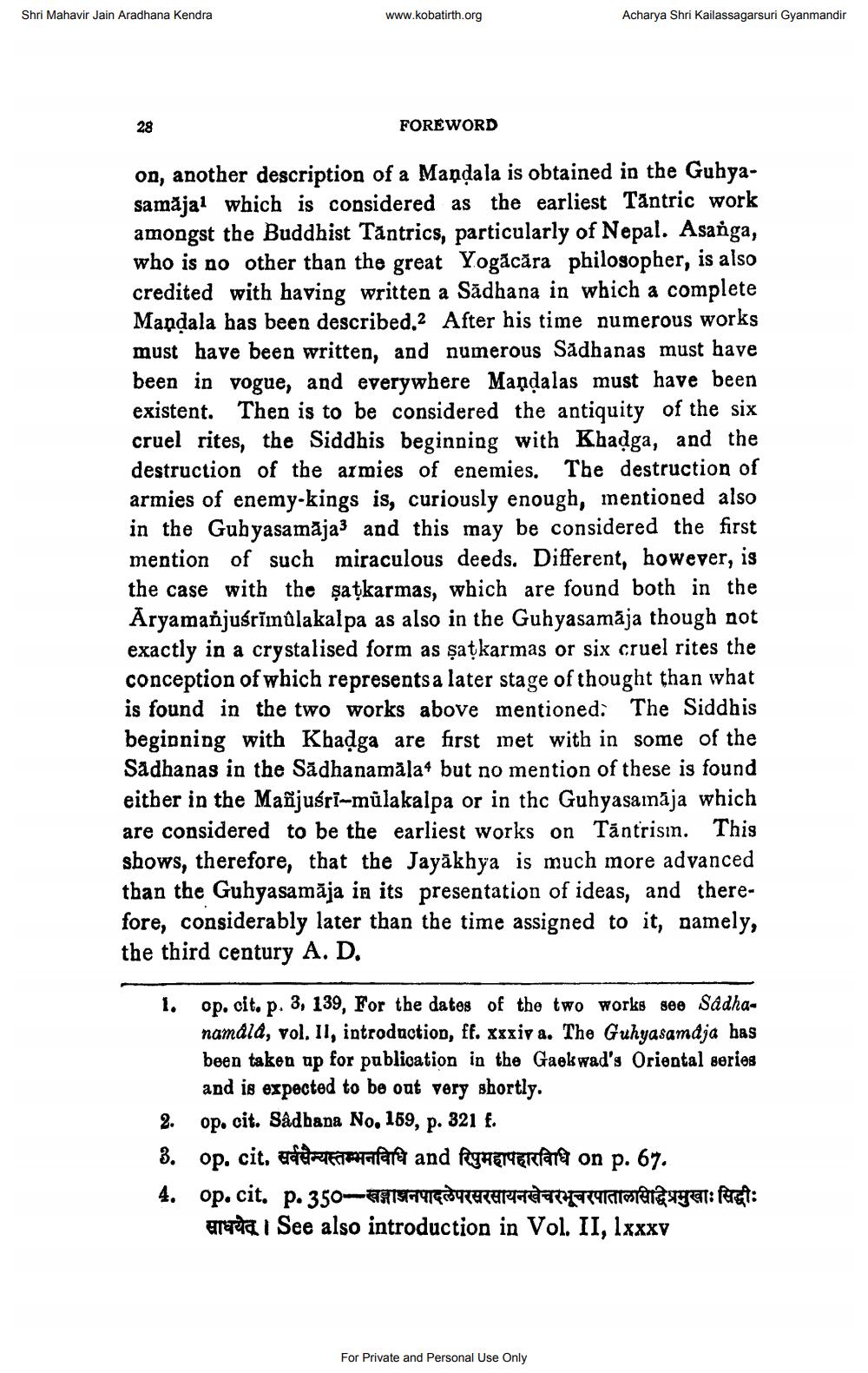________________
Shri Mahavir Jain Aradhana Kendra
www.kobatirth.org
Acharya Shri Kailassagarsuri Gyanmandir
FOREWORD
on, another description of a Mandala is obtained in the Guhyasamăjal which is considered as the earliest Tantric work amongst the Buddhist Tantrics, particularly of Nepal. Asanga, who is no other than the great Yogācāra philosopher, is also credited with having written a Sădhana in which a complete Mapgala has been described.2 After his time numerous works must have been written, and numerous Sadhanas must have been in vogue, and everywhere Mandalas must have been existent. Then is to be considered the antiquity of the six cruel rites, the Siddhis beginning with Khadga, and the destruction of the armies of enemies. The destruction of armies of enemy-kings is, curiously enough, mentioned also in the Gubyasamāja3 and this may be considered the first mention of such miraculous deeds. Different, however, is the case with the şațkarmas, which are found both in the Aryamanjusriinulakalpa as also in the Guhyasamāja though not exactly in a crystalised form as satkarmas or six cruel rites the conception of which represents a later stage of thought than what is found in the two works above mentioned: The Siddhis beginning with Khadga are first met with in some of the Sadhanas in the Sādhanamāla4 but no mention of these is found either in the Mañjuśrī-mülakalpa or in thc Guhyasamāja which are considered to be the earliest works on Tántrisın. This shows, therefore, that the Jayākhya is much more advanced than the Guhyasamāja in its presentation of ideas, and therefore, considerably later than the time assigned to it, namely, the third century A. D.
1. op. cit. p. 3, 139, For the dates of the two works see Sadha
namdla, vol. II, introduction, ff. xxxiv a. The Guhyasamdja has been taken up for publication in the Gaekwad's Oriental series
and is expected to be out very shortly. 2. op. cit. Sadhana No. 159, p. 321 f. 8. op. cit. सर्वसैन्यस्तम्भनविधि and रिपुमहापहारविधि on p. 67. 4. op. cit. p. 350- 1994@ucecur territorene ayet: Post:
anata I See also introduction in Vol. II, 1xxxv
For Private and Personal Use Only




